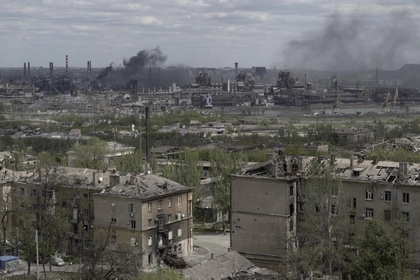Bonds: Investors expect further decline in bond yields
After a long pause, investors' interest shifted to longer bonds last week. This may indicate that investors expect a further reduction in NBU interest rates, so bond yields in the primary market are strengthening.
JOIN US ON TELEGRAM
Follow our coverage of the war on the @Kyivpost_official.
Last week, the MoF borrowed almost UAH6.9bn. Demand was mainly split between 12-month and three-year securities that jointly provided UAH6.4bn for the state budget. Three-year notes were oversubscribed for the first time in two months.
Most of the bids last week had the same interest rates as the week before, extending a pause in interest-rate reductions for longer-term paper. See details in the auction review.In the secondary bond market, the most traded papers were bonds due in 2025-2027. Total turnover more than doubled vs. the previous week to UAH14.4bn. Almost a third of trades were with "reserve" notes due in February 2027.
ICU view: Trading structure and dynamics indicate investors are partly rebalancing their portfolios in anticipation of the NBU Monetary policy committee meeting. Investors expect that the NBU will continue its monetary policy easing cycle due to low inflation. This week, the NBU will also release its updated macro forecast that will likely reveal more appetite for interest rate cuts in the foreseeable future.
Accordingly, buyers preferred bonds with longer maturities. Large volumes of trades in the longest available "reserve" securities may also result from an increase in mandatory reserves as of last week, so some banks could purchase the notes to allocate mandatory reserves into the highest-yielding bond available.

Russiaʼs War Caused $170B in Infrastructure Damage to Ukraine
Bonds: Eurobonds in restructuring expectation mode
In anticipation of the launch of restructuring talks, the prices of Ukrainian Eurobonds moved broadly in line with the global trend and their prices decreased last week.Eurobond prices fell by more than 7% last week and almost returned to the level where the rally started in March. Prices closed at 27.5‒35.4 (in mid-March, the price range was 27.7‒34.4), and the price range for instruments with different maturities narrowed to 12.5%. The price of VRIs slid by 2% to 54.3 cents per dollar of notional value. The EMBI bond index decreased last week by 0.8%.
ICU view: Last week, the process of approving the US package of military and financial aid for Ukraine advanced to its final stage. After the House of Representatives’ positive vote on Saturday, it is expected the decision will be finalized this week. Despite the general optimism due to unblocking aid to Ukraine, Eurobond prices hardly reacted to the positive news.
After critical US aid issue for Ukraine is nearly resolved, investor focus fully shifted to the upcoming restructuring of Eurobonds. Investors continue to discuss assumptions behind restructuring terms. A possible scenario being discussed is one along the lines of the 2015 restructuring, when all outstanding Eurobonds were combined and converted into a new series of bonds. This scenario is apparently much less favourable for holders of short-term paper.
FX: NBU does not prevent hryvnia weakening
Last week, hryvnia continued to weaken even though NBU FX interventions were the largest since the beginning of January. The NBU sold US$695m from international reserves last week, the largest volume of interventions in more than three months (a larger amount, US$790m, was last sold in the first week of the year).
We estimate the largest volume, approximately US$215m (nearly a third of the weekly volume), was sold last Friday.In the interbank FX market (in four business days), the hard currency sale by banks' clients decreased by almost 8% to US$864m, while purchases were up by 9% to US$1.1bn. Therefore, legal entities' net purchase of hard currency was up three times from the previous week to US$237m.
At the same time, in the retail segment, net purchase of hard currency decreased by 17% to US$120m (in four business days).The official exchange rate weakened by another 1% last week to UAH39.79/US$, taking the YTD official rate depreciation to 4.7%. The cash exchange rate in systemically important banks also weakened by 1% last week to UAH39.5-40.1/US$.
ICU view: A sharp increase in interventions did not prevent hryvnia weakening to a new record low. However, the current rate of depreciation remains broadly acceptable as it, so far, has not led to any visible excessive demand spikes from either business nor households.
RESEARCH TEAM: Taras Kotovych, Vitaliy Vavryshchuk, Alexander Martynenko.
See the full report here.
You can also highlight the text and press Ctrl + Enter











